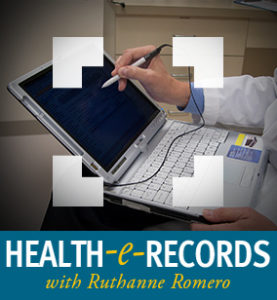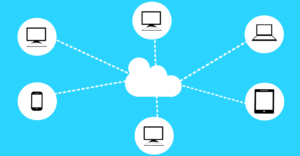The New Microchip
 Informed information sharing is the reason for the implementation of the EHR, but is it possible for there to be collaboration between separate healthcare providers while not impacting a patient’s right to privacy? Is the EHR a new variation on the microchip? The ole’ saying holds true, “be careful what you wish for”.
Informed information sharing is the reason for the implementation of the EHR, but is it possible for there to be collaboration between separate healthcare providers while not impacting a patient’s right to privacy? Is the EHR a new variation on the microchip? The ole’ saying holds true, “be careful what you wish for”.
Over the years, there has been discussion about implantable microchips that can store patients’ electronic health records. In 2004, the Associated Press announced that the FDA had approved the VeriChip, an implantable computer chip about the size of a grain of rice that could be inserted into a person’s arm to help providers obtain vital information about a patient’s medical history. Sounds great, right? It’s especially helpful if a person is unconscious or unable to talk. Though the FDA approved the first such chip more than 10 years ago, it has yet to be widely adopted.
As the technology continues to improve and the demand for fast, portable data grows, a “chip” is not that farfetched. In today’s EHR environment, we are becoming more portable every day. We are now able to obtain our medical insurance cards and see parts of our medical record right from our mobile devices. Providers are even able to obtain real-time data about patients from wearable health devices such as portable cardiac heart monitors. Even those providers who aren’t on the bleeding edge of technological advances have largely adopted the EHR. Most clinicians have transitioned from documenting in paper to digital format. As risk-adjusted reimbursement models become more prevalent, as mentioned a couple of times by my fellow blogger Kevin in @Facevalue, reliability on the modern connectivity and speed of network communication becomes a factor. Also, a key success factor of the EHR are the reports that come from it. One can easily see how quickly we are moving towards effective communication and coordination between healthcare professionals.
One common patient complaint about the people involved in their care is that they don’t feel everyone is working together. Providers have EHRs but they’re still “housed” on their own networks or servers. Just because data is in the computer does not mean it’s automated. Provider offices and hospitals still work independently. They’re only looking at their own patient’s chart and reviewing their own treatment plans and patient histories. These are just some of the reasons why patient data is incomplete, “pieces” of their records are literally all over the place.
Some of the disconnect may be attributed to laws pertaining to proprietary legislation. Since healthcare is a business and everyone is competing against one another, entities may not like to share. Also, HIPAA privacy and security regulations and the need to safeguard people’s protected health information (PHI) create additional hurdles to forming a single, complete record, even though this legislation is meant to be a good thing. As we have recently seen with social media, having someone know “all your business”, is not a good idea. Other factors like varied EHR formats, lack of consistent interfaces, and EHR customization by health care facilities all help contribute to incomplete patient data and data systems not being able to communicate with one another.
 Some healthcare providers have been persuaded by EHR vendors that they need to have flexible platforms to prepare for population health management and value-based care. That is why some providers are making the leap and moving their EHRs into the cloud. Overwhelmed with managing separate EHRs that don’t provide a platform for growth, cloud-based architectures are becoming more popular with healthcare providers because it can help them respond to rapidly changing regulatory programs and offers an ease of scalability for growth, thus helping them with population health and value-based care. Healthcare has always had a problem with “keeping up with technological time” and the EHR is no different when it comes to being able to keep up with the regulatory changes. Providers feel that the cloud will allow providers to focus more on the patients and less on babysitting the application. Cloud technology (aka Software-as-a-Service (SaaS) or web-based) are online solutions that store data on remote servers and make information accessible online. The cloud is everywhere – you access the cloud every time you login to Facebook, Gmail, or your online banking application. However, this technology does not come without risks. The more we are tied to one another through servers housed elsewhere, the more risk for data being able to go to places that are not known. The goal of making healthcare more transparent is beneficial from an economic standpoint. Transparencies help make it easier for people to see what actions are performed and what is driving costs. Knowing that information help to make us a more informed consumer and better decision maker, but utilizing our individual health data to help healthcare be more transparent can put our right to privacy in jeopardy.
Some healthcare providers have been persuaded by EHR vendors that they need to have flexible platforms to prepare for population health management and value-based care. That is why some providers are making the leap and moving their EHRs into the cloud. Overwhelmed with managing separate EHRs that don’t provide a platform for growth, cloud-based architectures are becoming more popular with healthcare providers because it can help them respond to rapidly changing regulatory programs and offers an ease of scalability for growth, thus helping them with population health and value-based care. Healthcare has always had a problem with “keeping up with technological time” and the EHR is no different when it comes to being able to keep up with the regulatory changes. Providers feel that the cloud will allow providers to focus more on the patients and less on babysitting the application. Cloud technology (aka Software-as-a-Service (SaaS) or web-based) are online solutions that store data on remote servers and make information accessible online. The cloud is everywhere – you access the cloud every time you login to Facebook, Gmail, or your online banking application. However, this technology does not come without risks. The more we are tied to one another through servers housed elsewhere, the more risk for data being able to go to places that are not known. The goal of making healthcare more transparent is beneficial from an economic standpoint. Transparencies help make it easier for people to see what actions are performed and what is driving costs. Knowing that information help to make us a more informed consumer and better decision maker, but utilizing our individual health data to help healthcare be more transparent can put our right to privacy in jeopardy.
The EHR may not be the new microchip in the physical sense because it is not a chip implanted under the skin, but it is reservoir to store our individualized data and it is “attached” to us. As new technological advances are designed and put into production to improve the ability of providers to collaborate and communicate between one another to improve healthcare and lower costs, the impact to one’s privacy will be impacted. And who knows, maybe someday just like our phones track where we’ve been, Netflix tracks what we watch on TV, and our car knows when to display the oil light to remind us to change our oil, for better or worse, our medical records may start to hound us to take better care of ourselves.






